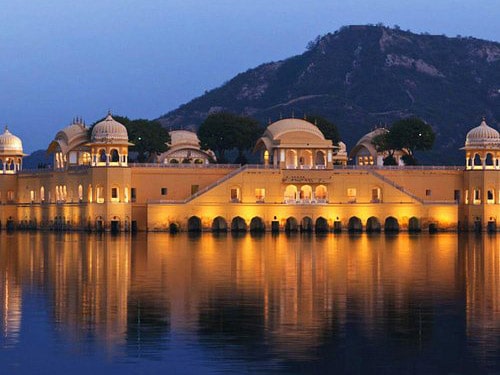Top Attractions in Jaipur

Learn about the special offers on accommodation from Resort Shiv Vilas. We are happy to offer a number of special offers to satisfy any taste: a perfect weekend break, business trip or accommodation during the event. Choose from the following packages to find out more...
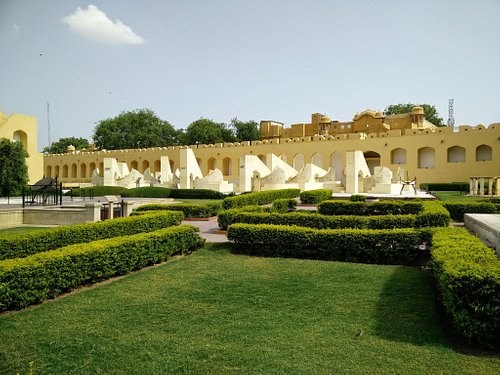
Jantar Mantar
Jantar Mantar is one of the oldest astronomical observatories featuring the world’s largest stone sundial, located in the heart of Jaipur. It is no longer a working science center but is maintained as a monument, and education activity sessions, guided tours and music and light shows, are organized here. Jantar Mantar in Jaipur is one of the largest observatories in the world, comprising of remarkable stone assemblies that help to interpret the position of celestial bodies and calculate local time. Enumerated as a World Heritage Site by UNESCO, Jantar Mantar attracts tourists, historians, astronomers, architects, mathematicians, and geographers. The collection of nineteen astronomical instruments in Jantar Mantar allows the observation of astronomical positions with the naked eye.
Hawa Mahal
Hawa Mahal or the 'Palace Of The Winds' located in the heart of the beautiful Pink City of Jaipur in Rajasthan, India, is one of the most famous tourist attractions and a prominent landmark of the city that is renowned for its rich cultural and architectural history. Built in 1799 by Maharaja Sawai Pratap Singh of the Kachhwaha Rajput dynasty, this beautiful structure is predominantly a high screen wall made of pink and red sandstone that facilitated royal women to get an eyeful of the street festivals and busy city life while remaining out of the view of public.
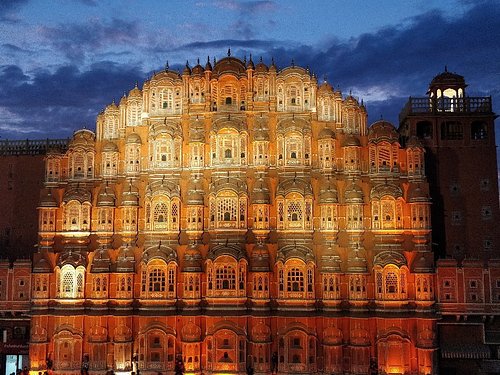
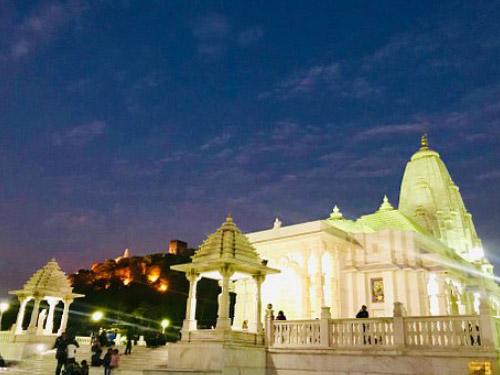
Birla Mandir
Birla Mandir is a very famous temple and a highly-regarded pilgrimage for the Hindus. Birla Mandir in Jaipur is a marvellous structure that speaks of beauty in every possible way. Built of marble this beautiful temple is visited by thousands of devotees every day. This temple is surrounded by lush gardens on all sides and is a treat for the eyes to see such colourful flowers all in one place. The temple has three domes and has beautiful drawings and carvings all around. The walls are covered with quotes and sayings from well-known preachers and holy men.
City Palace
Located deep within the walled city, the City Palace Complex was conceived and built by Maharaja Sawai Jai Singh II, the founder of Jaipur. A beautiful fusion of Mughal and Rajput architecture, the palace is still home to the last ruling royal family which lives in a private section of the palace. Maharaja Sawai Jai Singh II is credited with building most of the structures, but it was expanded upon by later rulers as well. The City Palace Complex includes the Mubarak Mahal (the palace of reception) and the Maharani’s Palace (the palace of the queen). Mubarak Mahal now houses the Maharaja Sawai Man Singh II Museum and displays a vast and unique collection of royal costumes, delicate Pashmina (Kashmiri) shawls, Benaras silk saris, and other dresses with Sanganeri prints and folk embroidery.
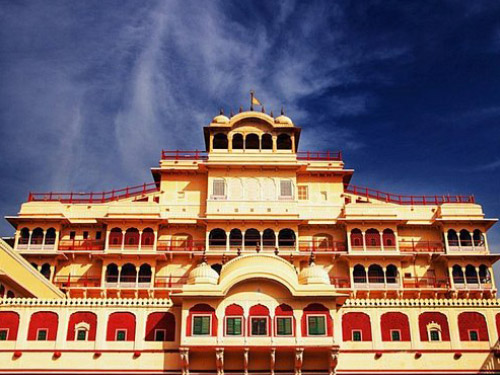
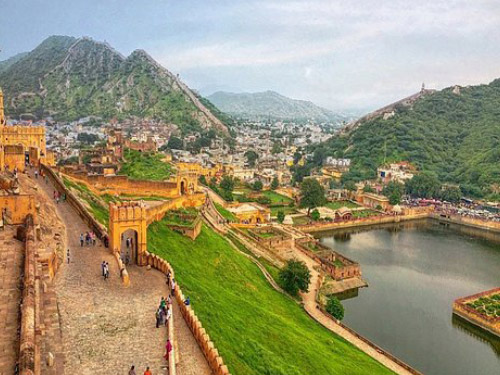
Jaigarh Fort
Located on the Hill of Eagles, Jaigarh fort was built in 1726 AD by Sawan Jai Singh II. Jaigarh Fort is located at a height of 500 feet above sea level and offers panoramic views of the surrounding. It houses the world's largest cannon on the wheels called 'Jaivana Cannon'. There are various other attractions within the fort like Laxmi Vilas, Lalit Mandir, Aram Mandir and the Vilas Mandir. Jaigarh Fort is made-up of sandstones and is spread over an area of 3 km. Made with the purpose of protecting Amer Fort, Jaigarh fort is considered as the strongest monument of Jaipur. Also known by the name of 'Victory Fort', this place was considered as a storehouse of all the war amours, cannons, arms and ammunitions. There is a Persian style garden within the complex of the fort which is divided into 4 parts.
Jal Mahal
Jal Mahal, one of the top places to visit in Jaipur, doesn’t have any recorded history about who built it or when. However, it is popularly believed that Maharaja Sawai Pratap Singh constructed Jal Mahal in 1799 to serve as a hunting lodge during his duck shooting trips. Some people also credit Maharaja Madho Singh I for the construction of this palace and date its origins back to the 1750s. Regardless of who built the palace, it was never meant to be used as a regular palace for living.
